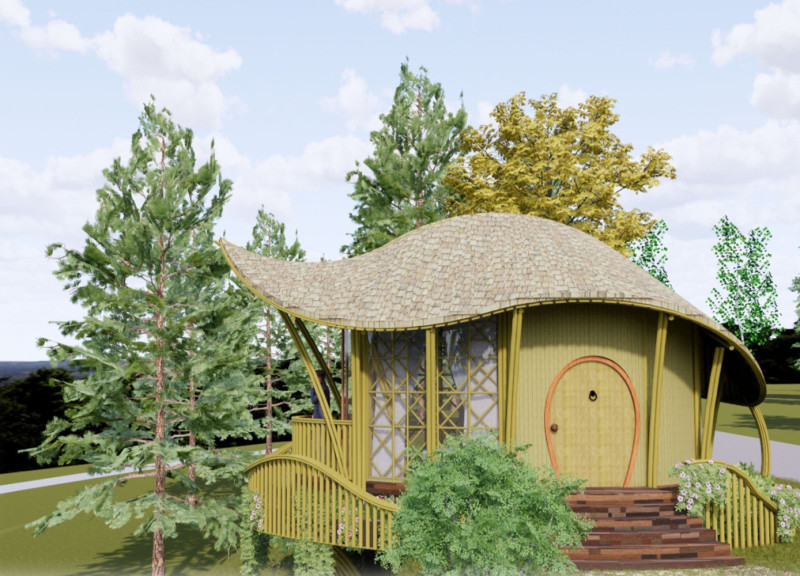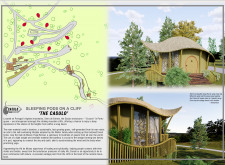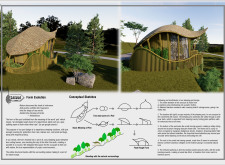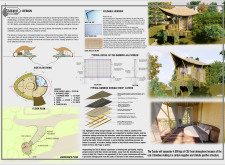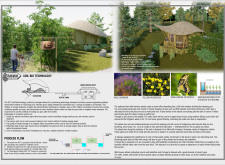5 key facts about this project
The primary function of The Casulo is to serve as a restful haven away from urban distractions. The design incorporates natural elements and local materials, emphasizing sustainability and ecological sensitivity. The structure’s oval form reflects biomimicry, drawing inspiration from natural shapes to blend harmoniously with the surrounding landscape.
Unique Design Approaches
An essential characteristic of The Casulo is its use of bamboo as the primary building material. Bamboo’s renewable nature aligns with the project's commitment to sustainability. Notable features include bamboo poles for structural integrity, sandwich walls for insulation, and bamboo shingles that cover the roof. This choice of material not only contributes to the aesthetics but also ensures the building's environmental impact is minimized.
The design includes large foldable windows that facilitate an outdoor experience, providing ample natural light while allowing occupants to engage with their surroundings. Additionally, the incorporation of Jali screens enhances both privacy and airflow, creating a comfortable atmosphere within the pods.
Another distinct aspect of The Casulo is its integration with the landscape. The project includes a variety of native plants, supporting local biodiversity and creating wildlife gardens that attract pollinators. The inclusion of Soil Bio Technology (SBT) for sewage treatment reflects an innovative approach to managing waste while maintaining hygiene standards.
Architectural Ideas
The architectural concepts explored in The Casulo showcase a focus on functionality paired with aesthetic appeal. The organic shapes of the pods encourage a sense of security and warmth, while their arrangement on-site fosters a communal experience for guests. The integration of landscaping with built forms emphasizes a seamless transition between architecture and nature.
The Casulo stands out in its approach to creating a serene environment that minimizes the ecological footprint. The project highlights how thoughtful design and material selection can coexist with ecological preservation. Readers are encouraged to explore the architectural plans, sections, and designs for a comprehensive understanding of the project’s nuances and innovative ideas.


